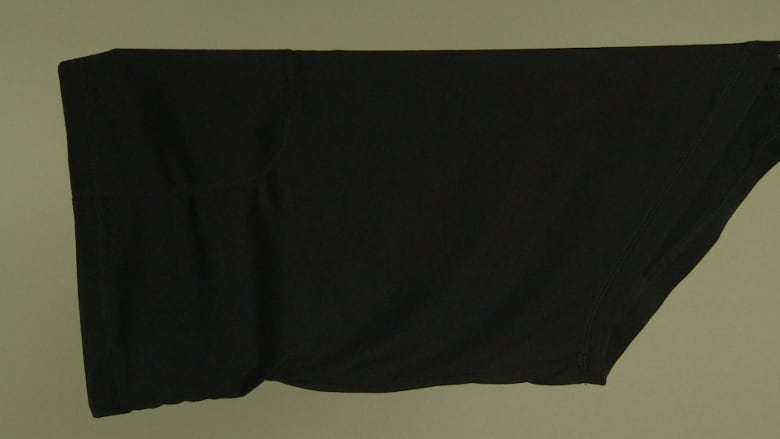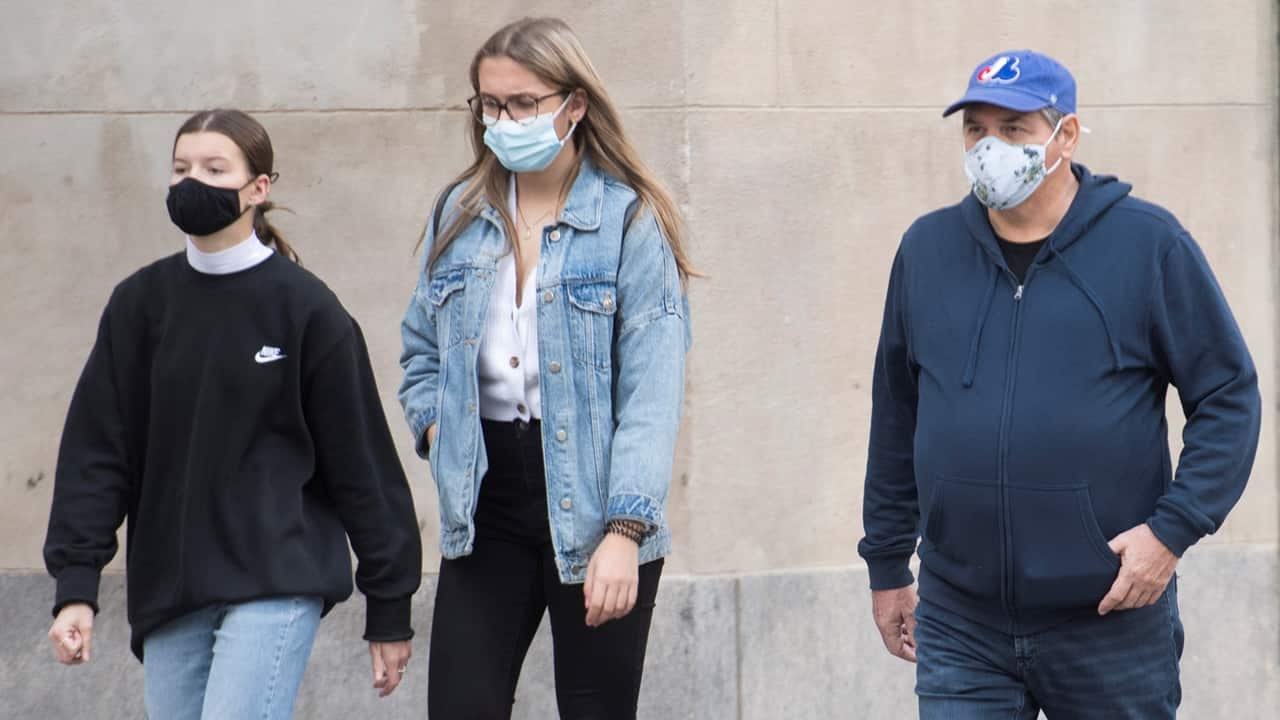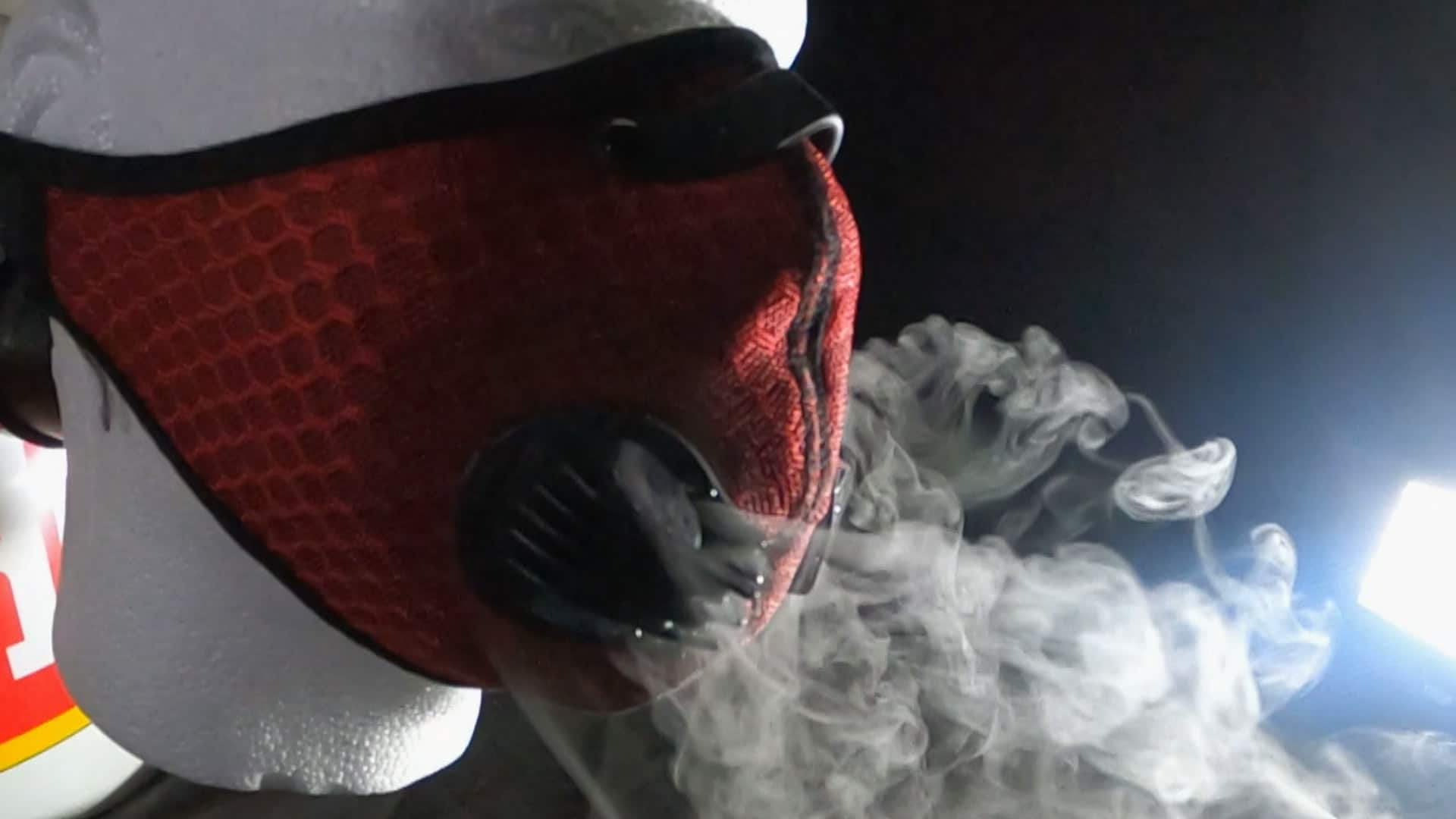Marketplace tested over 20 different masks. Here’s what will best protect you and others during the pandemic
[ad_1]
Wearing a mask is critical to reducing the spread of COVID-19, but rigorous tests conducted on behalf of CBC’s Marketplace found that while some work very well, others offer little protection from the particles that transmit the novel coronavirus. One type of mask can even spread those particles to others.
Months into the pandemic, there are still no standards for consumer masks. So Marketplace opted to compare more than two-dozen masks to what is commonly considered the gold standard in protecting health-care workers from infectious diseases like COVID-19 — the N95 mask.
Marketplace purchased the masks in stores and online from a variety of sellers. The masks were also made out of varying materials and featured different designs.
Marketplace put the masks through the rigorous National Institute for Occupational Safety and Health (NIOSH) standard test, conducted at a lower air-flow regimen to reflect normal breathing. The test is usually reserved for N95s and personal protective equipment (PPE) intended for health-care workers. A standard NIOSH aerosol test measures filtration efficiency, meaning the quantity of particles the mask filters out as the wearer breathes in.

An N95 mask must have a 95 per cent filtration efficiency.
“This is the benchmark test. And it’s actually useful because it allows us to compare consumer market masks to masks that we know a lot about,” said James Scott, a professor from the University of Toronto’s Dalla Lana School of Public Health. Scott is a specialist in bioaerosols and runs the lab where Marketplace‘s tests were run.
The test pulls a constant breath of air containing tiny salt particles through the mask material. The salt particles are similar in size to particles able to contain the coronavirus that might originate from droplets expelled by an infected person’s breath, cough or sneeze. During the test, samples of air inside and outside the mask are compared to see how effective the mask is at reducing the level of particles.
Previous tests on consumer masks have commonly looked at how masks can help block particles when coughing or sneezing and prevent transmission to others. But the Marketplace test shows that certain materials make some masks better at limiting wearers’ exposure by filtering what they breathe in, Scott said.
“Even fairly low-efficiency masks are actually quite effective at catching much larger particles. But, it takes a really good mask to catch the small ones as well. And we know that the virus will travel not only on the big ones but the small ones as well,” said Scott.
PHOTOS | A closer look at filtration efficiency of mask materials:
Results

Polypropylene fabric masks as good as N95
Marketplace‘s test found some masks are just as good as an N95 when it comes to filtering out those potentially harmful particles, including one made with something called polypropylene fabric.

Polypropylene fabric, in this case, is a melt-blown, non-woven plastic fabric. Melt-blown, non-woven polypropylene (NWPP) is commonly used in surgical and N95 masks.
The consumer mask Marketplace tested with an inner layer of melt-blown, non-woven polypropylene fabric and outer layers of cotton had filtration efficiency rates as high as an N95. Scott said the combination of multiple materials contributed to the strong result.
“This is a really good example of multiple layers of different materials combining to make something greater than the sum of the parts,” said Scott.

Blue three-ply surgical-type masks

Blue three-ply surgical-type disposable masks also reported some of the highest filtration efficiency rates in the Marketplace test, which was of no surprise to Scott, as most contain that melt-blown, non-woven polypropylene fabric.
“It’s this interwoven matrix of fibre. Air needs to travel around each one of those fibres and it meets the next fibre and it needs to bend its path. So as it does that, those fabrics pull out lots and lots of particles,” said Scott.
Two-ply and three-ply cotton masks
Marketplace also tested a number of cotton masks, including a two-layer, 100 per cent cotton mask, and a three-layer, 100 per cent cotton mask. More layers of cotton didn’t necessarily mean a better mask. The three-layer cotton mask Marketplace tested did not perform well, but the two-layer cotton mask did.

There was also a noticeable jump in filtration efficiency in cotton masks made with a higher thread count.
Masks made with 600 and 680 thread count cotton had filtration efficiencies almost twice that of the other cotton masks tested. Scott said the weave of a fabric is critical when it comes to catching those potentially harmful particles.
When it comes to cotton masks, Marketplace‘s test suggested the tighter the weave, the better.
Scott points out that manufacturers of consumer masks are not currently required to disclose details about thread count, and without that information it’s difficult to say for certain what contributed to some cotton masks’ poorer performance.

Masks to avoid
Scott said consumers should avoid wearing valve masks. While they are useful for protecting someone from inhaling paint fumes or when working in a wood shop, they do not help control the spread of the virus.
The reason is simple.
“Air only moves through the filter part of the mask when air comes in. It doesn’t move through the filter to exhale. It moves through the valve,” he said. “So there’s nothing to intercept those particles that you may be shedding into the environment.”

Transport Canada has banned the wearing of valve masks, as has Via Rail, and airlines such as Air Canada. Toronto, Ottawa Public Health, Hamilton Public Health and the BC CDC all recommend against the use of valve masks.
The Public Health Agency of Canada (PHAC) said: “Masks with exhalation valves are not recommended, because they don’t protect others from COVID-19 and don’t limit the spread of the virus.”
Despite this, some members of the federal security force at Canada’s Parliament in Ottawa, mandated to provide physical security for parliamentarians, employees and visitors to the parliamentary precinct, have been wearing valve masks while on duty.

In an email, the Parliamentary Protective Service told Marketplace: “The masks issued by the Parliamentary Protective Service (the Service), despite having a valve, meet the criteria outlined by PHAC regarding the appropriate use of non-medical mask or face covering. The Service has since replenished its stock with masks that do not include a breathing valve.”
Other masks to avoid
The neck gaiter-style mask and bandanas were among the poorest performing when it came to filtration efficiency rates. Scott said the thin, porous materials they are made from is likely the reason they did a poor job filtering out any potentially harmful particles, which is made worse by their loose fit.
A two-layer, 100 per cent rayon mask was also among the worst performing masks Marketplace tested for filtration efficiency.

Lack of standards, testing for consumer masks
Physician and infectious diseases specialist Monica Gandhi from the University of California, San Francisco expects mask requirements to be around for the foreseeable future, at least until there is enough of a safe and effective vaccine.
“I have become more and more convinced that they are one of the most important pillars of pandemic control,” said Gandhi.
As Marketplace‘s research has found that consumer masks protect the wearer in addition to others, public health agencies recently updated their guidelines to include that messaging.
Last week, Health Canada quietly updated its mask-wearing guidelines, adding “to protect yourself and others.” On Tuesday, the U.S. Centers for Disease Control went further, updating its recommendations in favour of masking by outlining a number of studies that point to masking as drastically reducing transmission of the disease for both the wearer and others.
WATCH | How masks protect not only others, but the wearer, too:

An infectious disease specialist cites research that suggests wearing a mask can lead to less severe illness from COVID-19 by limiting how much of the virus someone inhales. 0:35
“This is an incredibly exciting update from the CDC since messaging that allows the public to know that masks protect you as well as others will be more powerful in convincing skeptics that masks are important in public spaces to slow down spread and disease from COVID-19,” Gandhi said.
She also made note of research released in September that suggested wearing a mask can lead to less severe illness from COVID-19 by limiting how much of the virus someone inhales.
The CDC did not cite the study in its bulletin. However, Gandhi said there is accumulating data behind this hypothesis.
Regardless, she said: “Stressing that a mask protects you is getting out the same message we have been trying to convey for the past many months of the pandemic — that wearing a mask gives you a sense of control over your own destiny and protection. It is an important message.”
WATCH | These are the most effective face masks:

Marketplace put more than two dozen consumer masks to the test to see which ones do a better job at protecting you and why. 2:12
With rigorous standards in place for medical-grade masks in Canada and around the world, Scott anticipates standards for consumer masks are likely coming as a consequence of the pandemic.
Marketplace asked Health Canada why there is still no guidance on packaging for consumers with respect to mask performance, or best practices for manufacturers looking to make better masks.
Health Canada said that although it has not set out or endorsed any standards for face coverings, it is actively monitoring the development of standards for face coverings and may revise its position when new information becomes available.
Tips for finding the right mask
What to look for.
-
Start with something that fits you properly. Scott said a mask should fully cover your nose and chin, and be as tight fitting as possible around the rest of your face. If your glasses or sunglasses fog up when you are wearing your mask, you should choose another.
-
Scott suggests consumers look for masks made with multiple layers, and that at least one of them be cotton, preferably the highest thread count you can find.
The average person does not need the same level of protection as a health-care worker on the front lines, Scott said, noting that any mask is better than no mask at all.
[ad_2]
SOURCE NEWS
